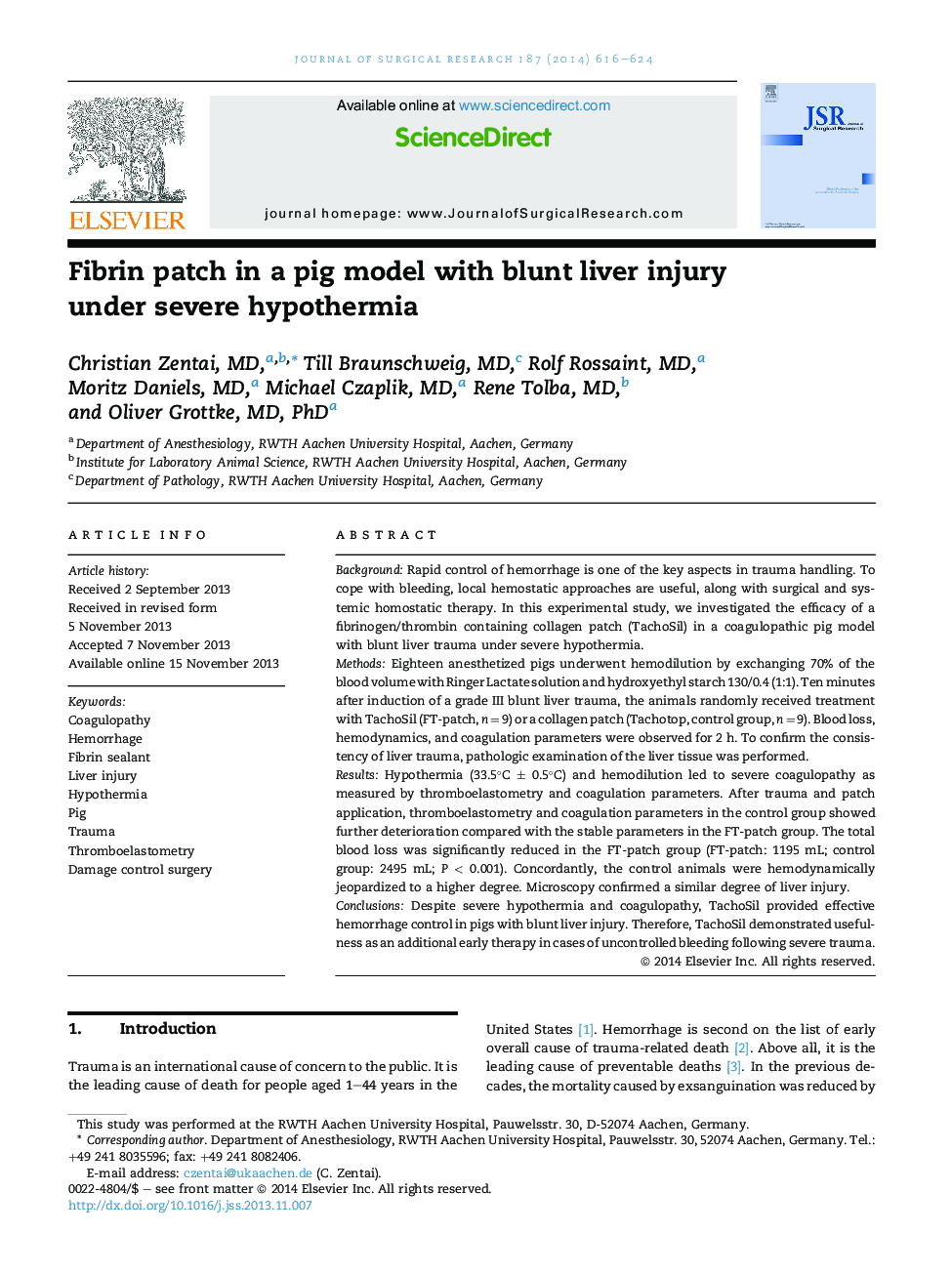| Article ID | Journal | Published Year | Pages | File Type |
|---|---|---|---|---|
| 4300435 | Journal of Surgical Research | 2014 | 9 Pages |
BackgroundRapid control of hemorrhage is one of the key aspects in trauma handling. To cope with bleeding, local hemostatic approaches are useful, along with surgical and systemic homostatic therapy. In this experimental study, we investigated the efficacy of a fibrinogen/thrombin containing collagen patch (TachoSil) in a coagulopathic pig model with blunt liver trauma under severe hypothermia.MethodsEighteen anesthetized pigs underwent hemodilution by exchanging 70% of the blood volume with Ringer Lactate solution and hydroxyethyl starch 130/0.4 (1:1). Ten minutes after induction of a grade III blunt liver trauma, the animals randomly received treatment with TachoSil (FT-patch, n = 9) or a collagen patch (Tachotop, control group, n = 9). Blood loss, hemodynamics, and coagulation parameters were observed for 2 h. To confirm the consistency of liver trauma, pathologic examination of the liver tissue was performed.ResultsHypothermia (33.5°C ± 0.5°C) and hemodilution led to severe coagulopathy as measured by thromboelastometry and coagulation parameters. After trauma and patch application, thromboelastometry and coagulation parameters in the control group showed further deterioration compared with the stable parameters in the FT-patch group. The total blood loss was significantly reduced in the FT-patch group (FT-patch: 1195 mL; control group: 2495 mL; P < 0.001). Concordantly, the control animals were hemodynamically jeopardized to a higher degree. Microscopy confirmed a similar degree of liver injury.ConclusionsDespite severe hypothermia and coagulopathy, TachoSil provided effective hemorrhage control in pigs with blunt liver injury. Therefore, TachoSil demonstrated usefulness as an additional early therapy in cases of uncontrolled bleeding following severe trauma.
